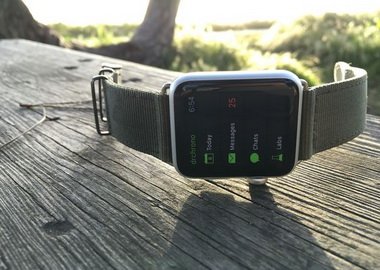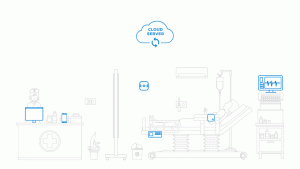Best Patient Engagement Products in the Market
Low patient engagement is a disturbing problem in healthcare. The results of weak patient activation and lack of effective patient engagement solutions keep the problem valid and industry professionals alert.
Meanwhile, digital technology innovators rely on medical software development to transform the healthcare environment and solve long-standing problems in the industry. Today, advanced mobile and wearable technology, AI-enabled and IoT-based solutions make strong attempts to eliminate seasonal poor performance in hospitals, close the gaps in chronic and mental disease treatment management and increase patient engagement rate.
Here’s a quick look at high-end eHealth solutions that focus on solving low patient engagement problem.
Patient Health Records in Apple Watch: drchrono
drcrhono creates market-leading EHR solutions for physicians and patients. Today, more than 100k clinicians in the US apply drchrono platform for patient management.
onpatient – a part of the platform – is a multichannel solution available on iPhone, iPad, web and Apple Watch. It provides patients with convenient access to their health records and allows to perform a range of time and effort-saving procedures online. The mobile app is one of the best iPhone apps for patient engagement available on the Apple store today.
onpatient users easily schedule doctor appointments, prefill online forms, apply in-app messenger to communicate with physicians, benefit with a set of reminders and notifications to improve medication and treatment requirements adherence. However, these are rather features. The primary function of the platform remains extended access to health documentation: medical records, lab results, appointment summaries.
As a multichannel solution, drchrono platform completely transforms the patient journey. On one hand, it automates time-consuming and tiresome procedures in healthcare, such as appointment scheduling and access to life-long medical history. On the other hand, this strikingly simple solution available on any Apple device including Apple Watch, encourages patients to participate in their treatment and health monitoring process, and thus, improves patient engagement.
Learn about our iOS application development services
How did it get here?
According to Accenture Consumer Survey on Patient Engagement, 99% of patients believe they should have access to their EHR (92% full access, 7% limited access). Hardly does predigital healthcare allow patients to browse through their old lab results. While traditional ERH systems usually focus on physicians, rather than patients.
onpatient is the ideal solution to address patients’ needs. The platform is both multifunctional and easy to use. Availability across all Apple devices makes it a one-stop tool. While recent enhancement – integration with Physitrack digital patient engagement software for secure in-app video consultations – makes the platform scalable and ideal for telemedicine practices.
100k+ Doctors in Alexa: HealthTap’s Dr. A.I.
Dr. A.I. by HealthTap is a perfect example of how a mobile solution can use today’s user habits and behavior patterns to improve patient engagement. Google and Pew Research Center claim 80% of Internet users seek online health information, one in twenty Google searches ends with health-related information. However, barely can users find accurate and reliable information due to the extensive noise in the Internet.
Dr. A.I. is an innovative solution to this problem. Powered by the rich knowledge base of more than 100k doctors across various fields, this platform provides users with relevant symptom-based healthcare information and advice. Powerful AI algorithm behind the platform helps Dr. A.I. analyze user’s symptoms against this extensive data, vet the results applying specific user’s characteristics, such as age, gender, medication intake, past symptoms and health records, and provide highly personalized structured medical advice.
What is more, the system applies the best practices of digital empathy and personalizes questions to user’s tech skills and age to excel customer experience and ensure it’s both helpful and engaging.
How did it get here?
Dr. A.I. is available on web and mobile as well as Amazon Alexa. However, accessibility through voice interface is what makes this solution a true boon. One just needs to call Alexa and name symptoms to get relevant medical advice.
This idea is perfect for the users with limited capabilities, lack of technology skills to use graphic or text interface or even in emergency cases. In other words, HealthTap designers made sure multichannel Dr. A.I. works with expanded availability and engages as many users as possible.
[E-prescription app development – Case Study]
Smart Hospital: Z-works IoT solution
Japanese-based startup Z-works has recently introduced the concept of IoT-based hospital and social care environment that applies multiple sensors to track presence, movement, temperature and collect more than 20 types of data to analyze patient’s care processes and treatment practices.
This concept is based on the idea that multiple time-eating micro processes such as monitoring of hospital bed availability and patient discharge can be fully automated with the help of IoT technology. As a result, it seriously reduces lines and waiting hours, smoothens patient journey, improves satisfaction, and in the end, creates positive healthcare experience for both patients and medical professionals.
Image credit: www.z-works.co.jp
How did it get here?
IoT-powered healthcare environment – hospitals, emergency vehicles, social care facilities – are designed to improve patient experience. This experience encourages patients to get rid of old stereotypes associated with hospital admission: extensive paperwork, long waiting lines and failed doctor appointments. Eventually, connected healthcare better meets patient expectations in terms of the quality of service and improves patient engagement.
Connected healthcare infrastructure: Kaiser Permanente
Connected healthcare infrastructure can be built without IoT technology involved. However, it also requires serious investment, digital innovation and complex integration capabilities.
Kaiser Permanente is an unparalleled case that demonstrates integrated health model. American care consortium invested $400m to create digital infrastructure across 38 hospitals and 651 medical centers. Today, it’s a fully functional system with various digital tools such as EHR and apps for patients, doctors, nurses, pharmacists and specialists integrated into health care operations. The system promotes convenience, fast and secure access to medical data and saved time and cost. Connected health care at Kaiser Permanente ensures patients get quality service. Hence, patient engagement grows.
How did it get here?
Kaiser Permanente provides the numbers that show actual results of how consortium’s model influences interaction between patients and healthcare. These results are astonishing.
For example, in 2016, digital accounted for 52% of 110 million patient interactions. These interactions were performed via various channels: smartphone, videoconferencing, kiosks, and other technology tools. According to company’s CEO Bernard J. Tyson “What we’re now seeing is greater interaction with our members and the health care system.”
In other words, patients gladly adopt digital in the field and contribute to patient engagement themselves by making this choice.
AI Chatbot against depression: Woebot
Woebot for Facebook Messenger is another AI-powered solution in healthcare that improves patient engagement and in a broad view helps to deal with the other long-standing problem – the gaps in mental healthcare infrastructure.
The concept behind the chatbot relies on the practices of cognitive behavioral therapy. Woebot builds personalized emphatic dialogues with users suffering from depression and anxiety. Therapist bot applies machine learning capabilities and over time creates individual strategies of coping with stress and mood swings. Unlike human therapist, Woebot is available round the clock, doesn’t require appointment scheduling and costs nothing to use.
How did it get here?
The study by Stanford University showed that people who used Woebot on a daily basis reported decrease in stress and anxiety after only two weeks of application. Considering the problems of insufficient resources in mental healthcare, AI-enabled digital tools like Woebot should become widely-used among people who either have little or no access to mental health specialists or for some reason simply don’t identify the problem as serious enough to consult with a doctor.
[Mobile donation apps development – Case Study]
Why it matters
Today, app stores don’t experience the lack of mobile solutions for patient engagement. Neither does the market have the shortage of companies developing software products for healthcare.
However, many eHealth tools and platforms fail to respond to the needs of modern patients and healthcare infrastructure either due to imperfect customer experience, lack of marketing initiative or simply unsustainable price. Therefore, major problems in healthcare keep standing.
These are five remarkable solutions that each in its own way proved they are reliable and future-oriented. Thus, they make an example of how to combat a long-standing problem in healthcare – low patient engagement.





